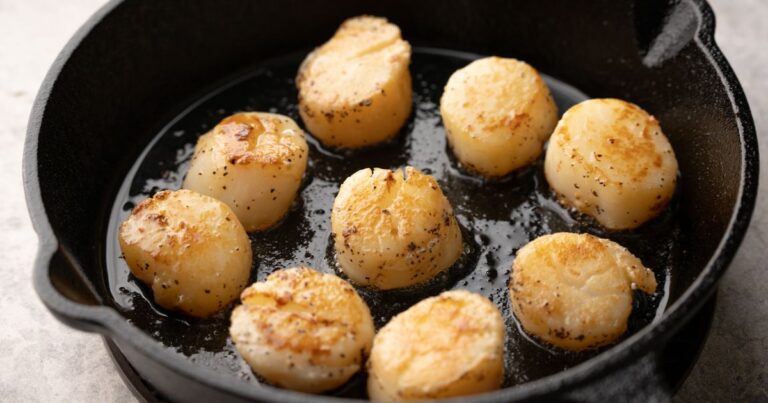Scallops are one of the most luxurious and delicious seafood options, often making an appearance at special occasions and festive meals. With their delicate, sweet flavor and tender texture, they deserve the utmost care when cooking. But how can you ensure they’re always cooked perfectly? That’s where the 3-1 method comes in—a simple yet incredibly effective technique for achieving scallops that are perfectly seared on the outside while remaining tender and juicy inside. Let’s break it down.
Choosing the Right Scallops
The first step to creating a standout scallop dish is choosing high-quality scallops. Not all scallops are created equal, and the term “scallops” can be used to describe different types of bivalves. The Pecten maximus, for example, is a prized species found off the coast of France, particularly in regions like the Bay of Seine and the Bay of Saint-Brieuc. These scallops are managed under strict quotas to protect the populations and ensure sustainable fishing practices. According to research from the French Institute for Research on the Exploitation of the Sea (IFREMER), the population of French scallops is in good health, meaning you’re more likely to get fresh, top-quality shellfish when purchasing from this region.
Treating Scallops with Care
Scallops have a fragile texture, so it’s essential not to overcook them. Overcooking will lead to a rubbery, unpleasant texture that ruins the entire experience. The key is to cook the scallops just enough to develop a light golden crust on the outside, while keeping the inside soft and tender. It’s all about balance and timing.
When it comes to cooking scallops, you’ll want to be fully focused, as even a few extra seconds of cooking can make a big difference. The goal is to achieve that beautiful contrast between a crispy exterior and a melt-in-your-mouth interior, a combination that will make your taste buds sing. One popular method is to sear the scallops for about two minutes on each side in butter. This creates the desired texture, but there’s an alternative technique that can really take things to the next level.
The 3-1 Method: A Game-Changer for Perfect Scallops
Some chefs take a different approach to achieve perfect scallops, and it’s called the 3-1 method. Here’s how it works: Sear one side of the scallop for three minutes, and then flip it and cook the other side for just one minute. This technique allows you to cook one side to a perfect golden brown while leaving the other side almost raw, which creates a delightful contrast in textures. The result is a scallop that has a crispy edge but a soft, almost creamy center—truly a treat for the senses.
What About the Oven?
While the stove-top sear is the go-to method for cooking scallops, there are times when you might be tempted to use the oven. However, if you’re using fresh, high-quality scallops, baking them in the oven isn’t the best choice. The texture can be compromised, and the delicate flavor may not shine through as it does with a quick, high-heat sear. If you’re using frozen scallops, on the other hand, the oven can be a better option for cooking them evenly without overcooking.
But when you have access to super-fresh scallops, there’s a whole world of raw preparations to explore. Scallops are just as delightful when served raw as they are when cooked. Think carpaccio, or even sushi or sashimi. When prepared this way, the scallops have an incredible silky texture that allows you to truly appreciate their natural sweetness and flavor. Raw scallops also give you an idea of what you’re preserving when you cook them—keeping that soft, luxurious texture is the key to a great dish.
Final Thoughts
Whether you’re preparing scallops for a fancy dinner party or just treating yourself to a special meal, perfecting the cooking method is essential. The 3-1 method is a game-changer for creating scallops with that perfect balance of crispy and tender. And remember, the quality of your scallops makes all the difference. If you can get your hands on fresh, sustainably sourced scallops, you’re in for a real treat. So next time you’re in the kitchen, give this simple but effective technique a try—you’ll be amazed at how easy it is to cook scallops like a pro.






